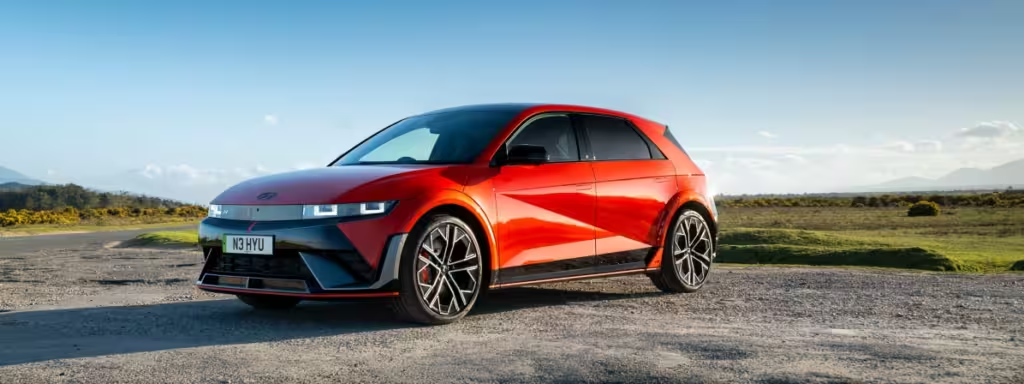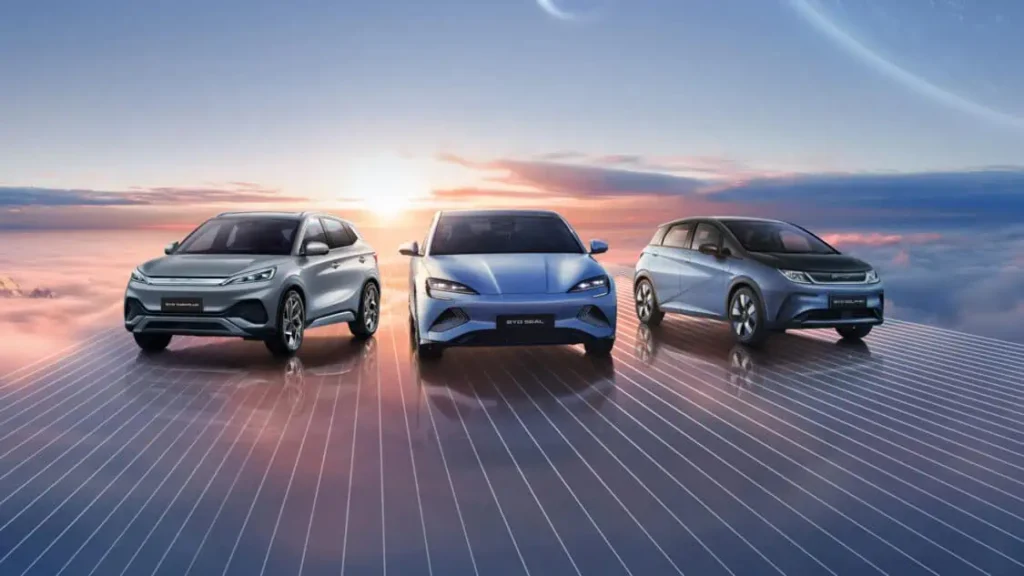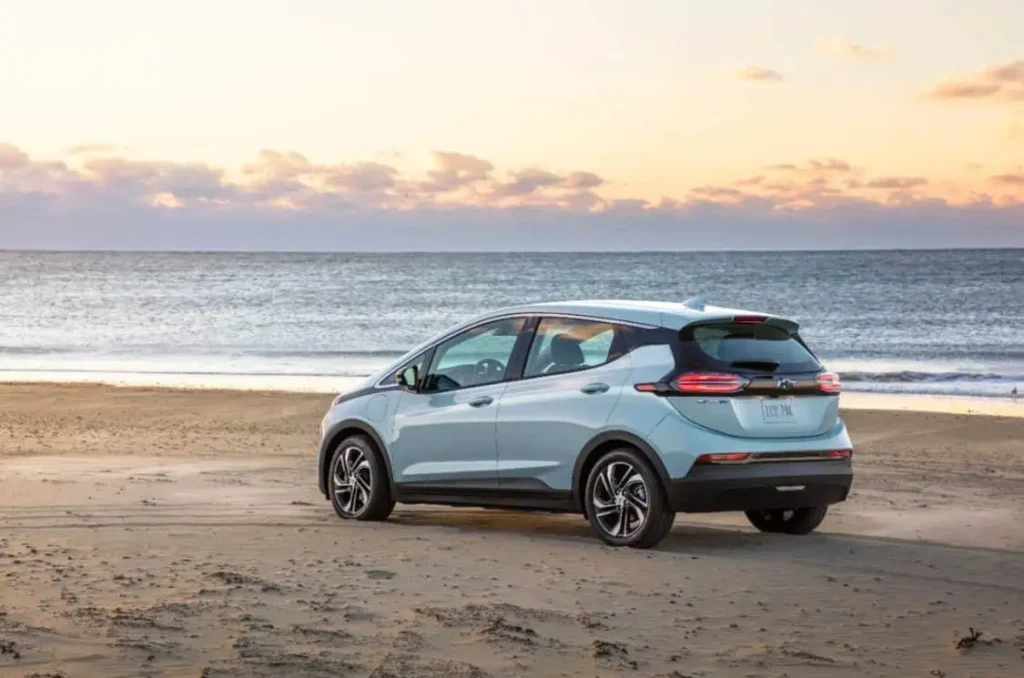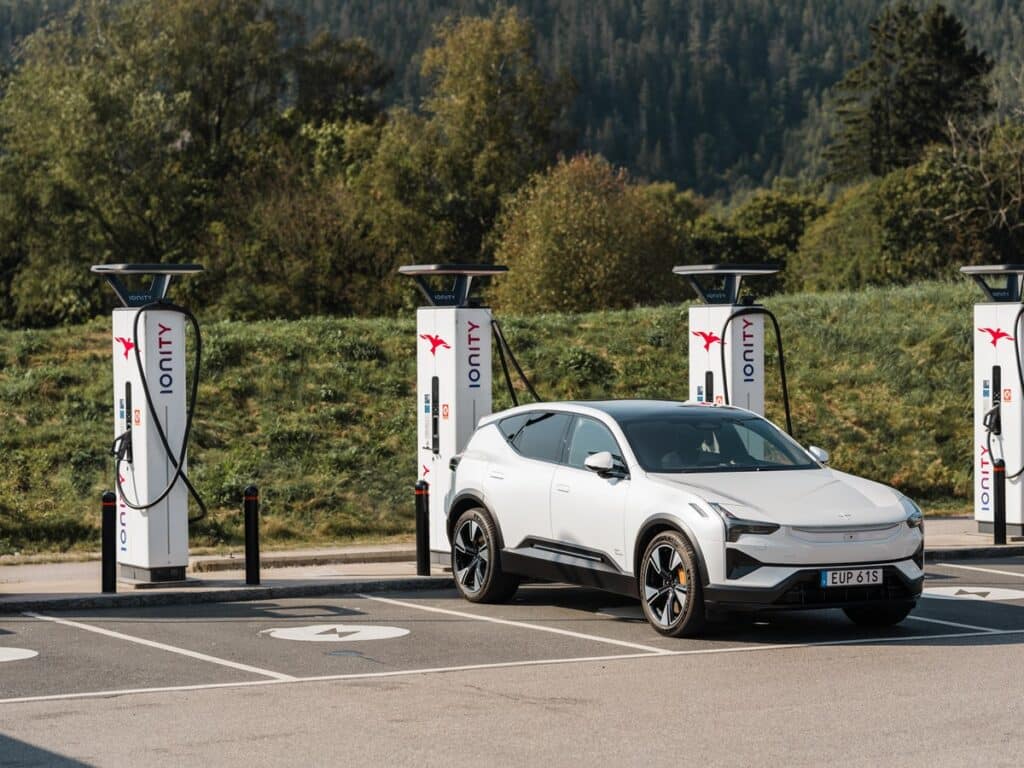America’s EV Revolution Will Continue to Thrive Despite 2025’s Challenges
The rapid evolution of EV technologies, combined with market, regulatory, and political shifts, has created a landscape in 2024 where adaptation has become paramount for companies in the EV and EV charging industries. 2025 will bring new turbulence, shaped by recent elections and ongoing trade tensions, presenting both promising opportunities and significant challenges for EV adoption in America.
The Impact of the 2024 Election on the EV Industry
NBC news projected that Republicans would win control of the House of Representatives on November 13, 2024. Last week, Republicans won control of the senate. With these wins, President-elect Trump will now have a clear path to enact his agenda. Trump has said during the campaign that he would do away with the “EV mandate,” and has opposed electric vehicles for the most part.
The 2024 U.S. election results, with Republicans taking unified control of the Presidency and Congress, signal potential shifts in the regulatory landscape for EVs and clean energy policies. While the Republican stance, particularly from President-elect Trump, suggests efforts to scale back EV industry subsidies and the Inflation Reduction Act (IRA) incentives for EVs and clean energy, the actual path forward could be more nuanced.
Possible Changes to EV Incentives and Subsidies
The IRA has been instrumental in accelerating EV adoption, with tax credits making EVs more accessible for a broader swath of consumers. A full repeal of EV incentives would likely dampen demand temporarily, slowing the rate of transition toward electrification. However, some Republicans, including House Speaker Mike Johnson, have suggested a more cautious approach, favoring targeted revisions rather than a wholesale rollback of the IRA. This creates an opening for EV industry stakeholders to advocate for policies that retain core incentives and subsidies while modifying provisions to address GOP concerns, potentially keeping subsidies tied to U.S.-based manufacturing and job creation intact.
A letter sent in August from over a dozen House Republicans highlights a growing recognition within the GOP of the economic significance of EV and clean energy tax credits and subsidies introduced under the Inflation Reduction Act (IRA). Led by Rep. Andrew Garbarino, these members advocated for a more measured approach, cautioning that an outright repeal of the IRA could disrupt ongoing projects and investments in clean energy, losing billions already spent.
The letter underscores a pragmatic perspective emerging within some parts of the GOP, where lawmakers are balancing ideological opposition to the IRA with the tangible economic benefits these credits bring to their constituencies. Many companies in clean energy and EV infrastructure have already committed substantial capital to projects, assuming these incentives would remain in place. A sudden repeal could create financial setbacks and shake investor confidence, potentially stalling economic growth in regions that are beginning to see significant economic benefits of clean energy investment funded by the IRA.
Since the IRA’s inception, 334 new clean energy and electric vehicle (EV) projects have been announced, 60% of which are in Republican congressional districts. The projects are expected to create nearly 110,000 new jobs and bring a minimum of $126B of private investment to forty states. Currently, more than 110 major clean energy and EV factories are being developed, with 55 of them based in South Carolina and Georgia.
The GOP’s stance on IRA credits will significantly impact sectors ranging from EV to solar and wind energy to EV charging and battery manufacturing. The Republicans who support retaining some tax credits are likely influenced by the immediate economic impact on their districts—many of which benefit directly from job creation and infrastructure development driven by these credits. By preserving these credits, the GOP can support continued growth in energy jobs and technology without directly endorsing the broader IRA framework.

If the incoming Trump administration successfully repeals EV subsidies and purchase incentives, it would introduce significant challenges for U.S. EV manufacturers and other stakeholders. Without the tax credits that have helped bridge the price gap between EVs and internal combustion engine (ICE) vehicles, domestic EVs could face higher price points, which could make them less competitive both against ICE models and lower-cost EV imports, especially from China. The credits and incentives also help EV producers compete globally with China, a highly important part of profitability. To navigate these policy risks and maintain momentum, stakeholders will need to adapt quickly and strategically.
Given the potential loss of federal incentives, EV manufacturers and battery developers may need to pivot their focus toward aligning with new policies that prioritize domestic manufacturing, job creation, and energy independence. The administration’s emphasis on American workers and strategic interests suggests that policies incentivizing U.S.-based manufacturing, particularly in the EV and battery sectors, could remain viable. Companies might explore strengthening their domestic supply chains, investing in U.S. battery manufacturing facilities, and advocating for policies that support innovation in this area.
Furthermore, lobbying efforts could focus on preserving specific subsidies or credits tied to U.S. manufacturing content rather than consumer incentives. EV stakeholders could work to frame certain IRA provisions as vital to American economic and strategic interests, potentially securing bipartisan support for targeted tax benefits that directly create U.S. jobs and reduce reliance on foreign suppliers.
Connected Car Rule
The U.S. Commerce Department’s proposed national security and supply chain action, affecting connected vehicles and more, was announced in September. This proposal would restrict the sale or import of vehicles and components tied to China (PRC) or Russia, particularly targeting connectivity technologies but potentially affecting EV batteries and other components. The rules would phase in, with software bans starting in 2027 and hardware bans by 2030 (or 2029 for certain units). The Commerce Department’s rationale for this action is to protect U.S. national security by preventing foreign interference, and there are no indications that the new administration would alter these plans. A number of auto industry companies have spoken out against the proposed connected car rules, saying they will suffer severe economic impacts.
100% US Tariff on Chinese EVs
In May, the U.S. Trade Representative imposed new tariffs on imports from China, including a 100% duty on EVs, 50% on solar cells, and 25% on steel, aluminum, EV batteries, and critical minerals. Despite concerns raised by automotive manufacturers and suppliers about supply chain disruptions and higher consumer costs, the administration prioritized countering unfair trade practices, particularly in technology transfer and intellectual property issues under Section 301. This decision impacts $18 billion in Chinese imports, reflecting a strong stance on trade enforcement even amid potential challenges for the U.S. EV industry. Most experts agree that tariffs increase prices for consumers.
In May, Bill Russo, automotive industry expert and Founder, Chairman and Board Director of Shanghai, China-based Automobility Ltd., said:
“If 100% tariffs were a missile aimed at Beijing, it landed on Detroit. Tariffs are best used as a tool to cause manufacturers to favor domestic production and sourcing — which is preferred for obvious reasons. The issue here is they are being levied for one particular product type (EV) from only one country (China) in order to protect a domestic industry (automotive) where domestic players are uncompetitive in that product type. Tariffs will not make them more competitive and will slow the transition to EV.”
Russo continued: “Washington has confused ‘national security’ with ‘security blanket.’ It is in the national security interest to pave a path to decarbonization of the transport sector leveraging a domestically secured clean energy supply chain. However, these tariffs instead create a security blanket for an automotive industry that would rather continue to extract short-term profits from products linked to the oil and gas supply chain.”
The United States-Mexico-Canada Agreement (USMCA)
The United States-Mexico-Canada Agreement (USMCA) is scheduled to expire in 2035 unless renewed. With Chinese EV manufacturers like BYD expanding into Mexico, there is speculation that President-elect Trump may use the six-year renegotiation clause to tighten vehicle and component origin rules. This action could address potential loopholes that allow Chinese companies to access U.S. and Canadian markets indirectly via Mexican operations, aiming to reinforce trade protections and limit the influence of Chinese EV makers in North America.

Possible Chinese EV Factories in America
During the campaign, Donald Trump diverged from typical party rhetoric on Chinese investment by expressing openness to Chinese carmakers building factories in the U.S. Cheap Chinese EVs are proliferating quickly in China, Europe and around the world. Chinese electric vehicles (EVs) have been increasing their market share in Europe, and in June 2024 they reached a record 11% of the EU’s EV market.
The BYD Seagull costs under $10,000 in China, as the most obvious example of cost savings for consumers. If Chinese EVs were built in America, their prices would be significantly higher, due to America’s much higher labor costs and other factors. However, it would be an interesting and significant new development in the American automotive industry. Many OEMs have pursued partnerships with Chinese firms to gain from Chinese EV technology.
Labor Dynamics and Issues
The historic 2023 United Auto Workers (UAW) strike against Ford, GM, and Stellantis had a major financial impact, causing an estimated $4.2 billion in losses for the automakers and $488 million in lost wages for workers. Although less than 20% of U.S. auto workers are unionized, the resulting agreements include significant wage hikes, such as a 60% increase for certain new hires, with Ford estimating an added $900 per vehicle in future labor costs. These increased costs could pressure UAW plants to remain competitive with non-unionized global counterparts, a tension that may deepen if further cost reductions are needed. Additionally, the UAW’s recent success in organizing GM’s Spring Hill, TN battery plant underscores the union’s growing influence in EV-related sectors.
The UAW is now targeting non-unionized autoworkers in the South, including:
Mercedes-Benz: Vance, AL and Charleston, SC
Subaru: Lafayette, IN
Lucid Motors: Casa Grande, AZ
Tesla: Austin, TX, Buffalo, NY, Sparks, NV, Lathrop, CA, and Fremont, CA
Rivian: Normal, IL
Mazda Toyota Manufacturing: Huntsville, AL
Inflation and Interest Rates
Interest rates have been a critical factor in the capital-intensive EV sector, with businesses keeping a close eye on cost-of-capital impacts throughout 2024. The U.S. Federal Reserve’s September 50-basis-point rate cut—the first since the COVID-19 pandemic—has raised optimism among contractors, developers, and manufacturers facing record-high construction costs. With expectations for additional cuts of up to another 50 basis points by year’s end and potential downward trends in 2025, many in the industry are hopeful that reduced interest rates will alleviate financial pressure and support project momentum. The Federal Open Market Committee continues to weigh these trends closely, as interest rate shifts could significantly affect future EV investment and growth.

EV Costs Remain High
Despite the growing presence of electric vehicles (EVs) in the U.S., the upfront cost remains a significant barrier to wider adoption, particularly as consumers weigh the price against traditional internal combustion engine (ICE) vehicles. As of September 2024, the average transaction price for new vehicles in the U.S. is $47,870, with EVs averaging $56,575—over $15,000 more than the typical vehicle price a decade ago.
This higher initial cost, coupled with uncertain resale values due to evolving battery technologies, complicates the transition to electrification. Many U.S. EV buyers prefer larger, more expensive, and faster-depreciating models like SUVs, further adding to the cost challenge. While EVs often offer lower lifetime maintenance and ownership costs compared to ICE vehicles, the initial price remains a key factor influencing consumer decisions and slowing broader adoption. Chevrolet’s Bolt is expected to be the lowest-cost EV in America, upon its release in 2025, and is predicted to be a best-seller. One of EVinfo.net’s most important goals is reducing new EV costs for American consumers, as we see that as a vital cornerstone to increasing adoption in America.
Industry Projections
Despite strong support for EV adoption and incentives, traditional automakers are adopting a more cautious approach to electrification in recent years. According to the Argonne National Laboratory, plug-in electric vehicles (PEVs) captured 9.1% of total light-duty vehicle (LDV) sales in June 2024. PEVs include both battery electric vehicles (BEVs) and plug-in hybrid electric vehicles (PHEVs). A total of 120,314 PEVs sold during June 2024 in the United States: 96,666 BEVs and 23,648 PHEVs. Altogether, 716,834 PHEVs and BEVs have been sold in 2024. In total, 5,439,744 PHEVs and BEVs have been sold in America since 2010.
While there were ambitious projections in 2021 calling for 50% EV adoption within a decade, more recent statements from manufacturers indicate a more gradual target of 30% to 40% EVs by 2030. Market penetration may not surpass this range in the near future unless there are more dramatic shifts in consumer preferences. Significant improvements in battery technology, such as increased range and reduced costs, may move increase these target numbers significantly. EV ranges have steadily increased, and these increases are expected to keep expanding into higher mileages as we move forward.
Growth of Hybrids
The cautious outlook on EV adoption has led many traditional automakers to scale back certain capital investments in favor of hybrid drivetrains. Many OEMs now view hybrid vehicles as a transitional step toward an all-electric future. This shift in strategy has prompted suppliers to revise their volume projections, adjust operations, and re-evaluate staffing requirements to align with the evolving focus on hybrid technologies, rather than an immediate full transition to electric vehicles.
Charging Growing Fast
The U.S. has reached a significant milestone in its EV infrastructure development, with the national EV charging network now surpassing 200,000 public charging ports. This expansion was part of the Biden-Harris Administration’s goal to install 500,000 chargers by 2030, with the national network ahead of schedule as of today. The rapid deployment is supported by both public funding, including the National Electric Vehicle Infrastructure (NEVI) formula program, Charging and Fueling Infrastructure (CFI) program, and the Electric Vehicle Charger Reliability and Accessibility (EVC-RAA) program, as well as private sector investments. These efforts have led to the establishment of fast-charging hubs along major travel corridors, ensuring that, as of October 2024, drivers can find a fast charger every 50 miles on 57.8% of the busiest routes.

Charging Problems Remain
From an infrastructure perspective, the installation of new EV charging stations faces significant challenges, particularly related to costs and bottlenecks. Utility delays can stretch installation timelines from months to years, and managing interconnection queues, including software integration, has become a growing issue for utilities, government agencies, and the EV community. Stakeholders are hopeful that the Tesla-based charging port format, now known as the North American Charging Standard, will help streamline installations and improve consistency. Nearly all EV makers and charging companies have said they will adopt NACS.
An August study by UC Davis and ChargerHelp! of 20,000 chargers highlighted ongoing problems. The study found that the average uptime for these chargers was only 73.7%, with common issues such as broken stalls, inaccurate status updates, rapidly wearing equipment, network provider difficulties, and frequent cable theft. These challenges emphasize that EV charging infrastructure is more prone to malfunction compared to traditional internal combustion engine (ICE) fueling stations, creating barriers to widescale adoption. A few innovative companies tackling the reliability problem are EVSTAR and WattsUp.
Why the EV Industry Will Keep Growing in America
In Q3 2024, U.S. electric vehicle (EV) sales reached a new record, fueled by enticing lease deals, favorable financing offers, and an increasing demand for more affordable models. These factors have made EVs more accessible to a broader range of American car buyers, contributing to the surge in sales and signaling strong momentum in the transition to electric mobility.
In Q3 2024, automakers sold an estimated 346,309 electric vehicles (EVs), marking a 5% increase from the previous quarter, according to Cox Automotive. EVs now account for 8.9% of total auto sales, the highest percentage ever recorded, up from 7.8% during the same period in 2023. This growth reflects the rising consumer demand for EVs.
EVinfo.net expects the growth to continue, despite any cuts by the Trump administration to EV incentives and subsidies. We believe private investment will increase instead of decreasing. Cutting the incentives and subsidies will create an initial shock, and likely a decrease in EV sales growth. However, these sales will bounce back up, most likely by the end of 2025.
The reason for this optimism is that the American EV revolution has come too far, and is now too widespread to stop. It can only be slowed for a short time. With Trump’s removal of the “EV mandates” expected, which include removing strict EPA regulations calling for lower emissions in the coming years, EVs will have a more clear and easy path to success, by having greater public support. EV opponents have spoken out about these regulations frequently when making critical remarks about the EV industry. California currently has the strongest plan to fully convert to EVs. As part of California’s Advanced Clean Cars II regulations, all new passenger cars, trucks, and SUVs sold in California are mandated to be zero-emission vehicles by 2035.
Climate Change Will Get Worse
With these eases in regulations, and a reduction in EV sales, the effects of climate change will worsen. But hopefully, easing the regulations and removing the mandates will lead to stronger EV sales. Our future is electric, and that won’t change within the next four years, or at any time in the future beyond that. But, how the EV industry handles the next four years will be interesting.
With these election results, It’s clear that the majority of the American public is still not aware of what climate change is, or what that devastation means for the earth and all of its living things. Trump has called climate change a “hoax.” If the voters were thinking primarily about economics and inflation, climate change will increase inflation and prices, and devastate the economy along with everything else. Rising temperatures and more frequent wildfires in the West, and more frequent hurricanes in the Southeast are only two examples out of many ways climate change will be very harmful to our economy.
Rivian CEO RJ Scaringe released an excellent overview video this week, showing why fighting climate change is important, and the significant role that EVs and renewable energy play in reducing carbon emissions. Carbon emissions from internal combustion engine (ICE) vehicles and other sources create greenhouse gases that causes global warming and that warming causes climate change.
EVinfo.net was founded in January 2022, to promote EVs worldwide and in our home base of the United States. We recognized that climate change is an important issue that must be addressed more strongly, and supporting EVs is one way to do that. So that’s what we are doing.
Federal EV Tax Credit and EV Subsidies Receive Blowback
Many people in EVinfo.net’s LinkedIn network oppose the federal EV tax credit and EV subsidies. We understand that if a person doesn’t like EVs and never plans to buy or lease one, it’s only fair that they should have the power to vote against the federal EV tax credit and EV subsidies. This is the power of America’s democracy, and we respect the EV critics who advocate for removing the credits and subsides. They have a right to their own opinions, and to vote accordingly. Moving that vote to each state’s decision to create its own EV tax credit would allow these critics to more directly make their voices heard. Removing the federal EV tax credit and EV subsidies would be a disaster for our economy. We explain why below.
The Global Automotive Industry
If you follow the global automotive industry, you are no doubt well aware of the fact that China is very, very far ahead of America and the rest of the globe with EV production and adoption. If you are not aware, we encourage you to do some research on it. S&P Global reported China’s new energy vehicle sales (BEVs and hybrids) reached 1.29 million units in September, up 17% month over month and 42.3% year over year, hitting an all-time high and surpassing the record set in August. Additionally, the report shared that China’s EV production reached 1.31 million units in September, up 19.7% month over month and 48.8% year over year. Reuters reported half of all vehicles sold in China in July were either new pure electric vehicles (EV) or plug-in hybrids.
The reason keeping an eye on EV sales and production in China is important is because it is definitive proof that EVs are rapidly becoming the dominant force in the global automotive industry. China, the largest automotive market in the world, saw the sale of 26,062,824 passenger cars in 2023. From 2009 to 2023, the Chinese government invested a total of $230.8 billion to support the growth and development of its electric vehicle industry, making it the global leader, leaving America far behind.
The Federal EV Tax Credit and EV Subsidies Protect America’s Jobs and Economy
The federal EV tax credit and EV subsidies are important because they are crucial to helping American automakers catch up to China and compete with China, by producing EVs made in America. Removing the credit and subsidies would be a disaster for America’s economy, losing American jobs in significant numbers. The American automotive industry would shrink drastically, with automotive sales confined to its own borders (with the exception of Tesla). At EVinfo.net, we urge you to contact your government representatives and save the federal EV tax credit and EV subsidies, saving America’s automotive industry and jobs.

Electric Vehicle Marketing Consultant, Writer and Editor. Publisher EVinfo.net.
Services